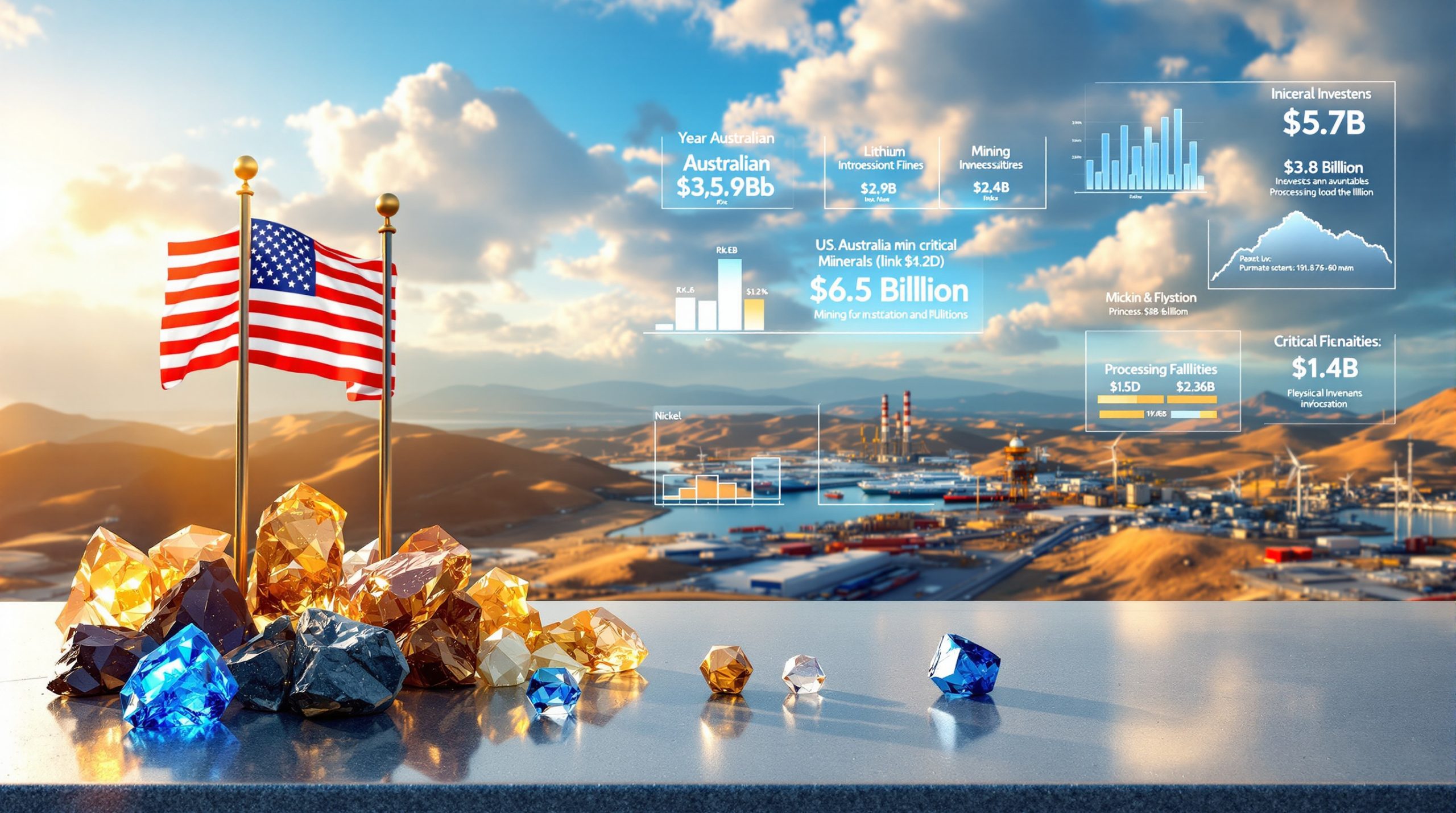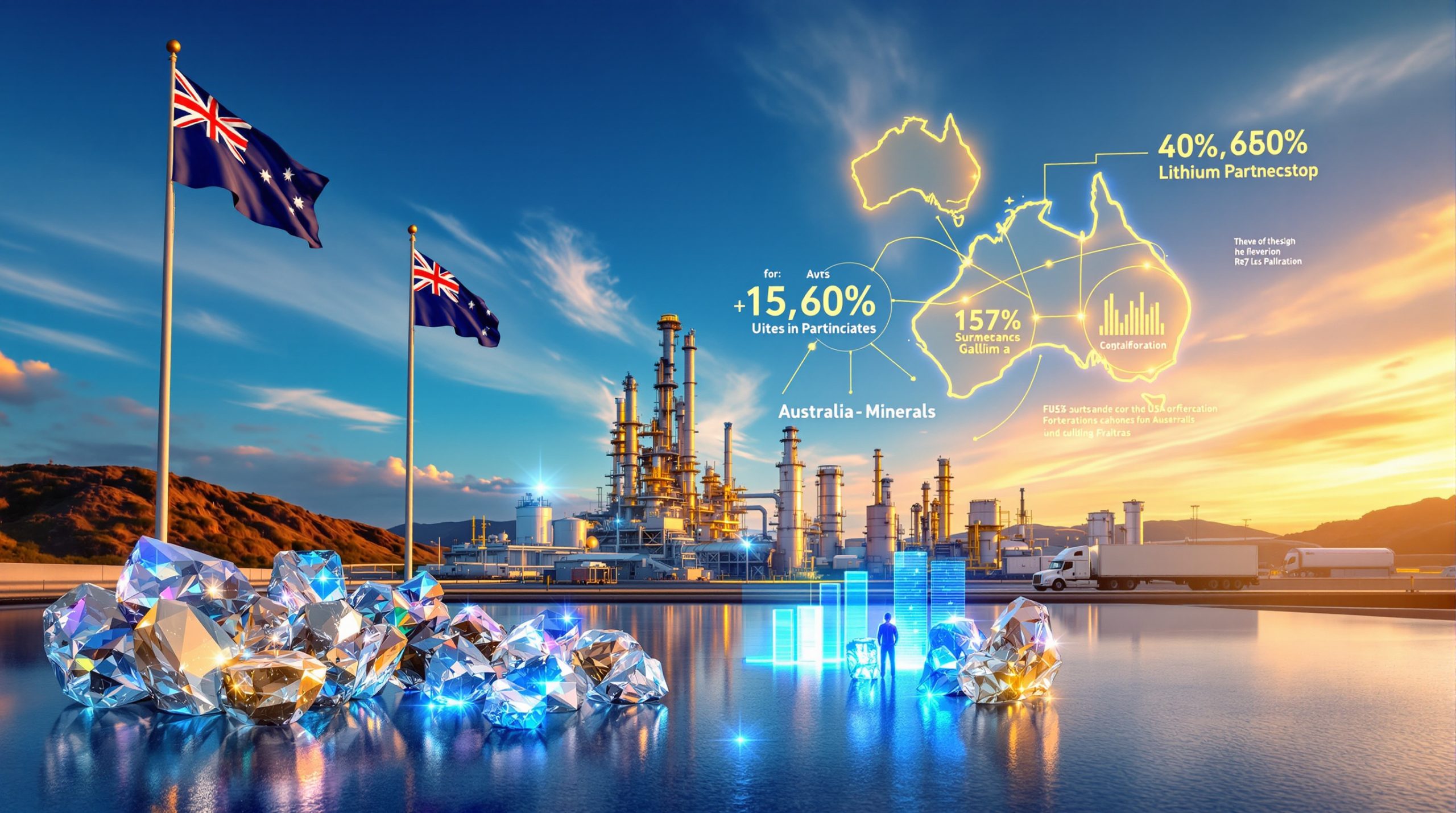What is Driving Growth in the Nonferrous Metals Industry?
The nonferrous metals sector is experiencing remarkable momentum in 2025, with key indicators pointing to robust expansion across the value chain. Recent data from the China Nonferrous Metals Industry Association shows the industry's added value grew by 7.0% year-on-year from January to May 2025, demonstrating strong fundamental performance despite challenging global economic conditions.
This growth trajectory is primarily fueled by three interconnected factors: strategic investments in production capacity, technological modernization throughout the supply chain, and a significant push toward higher value-added manufacturing activities.
Key Growth Indicators in the Nonferrous Metals Sector
The industry's health is reflected in several compelling metrics:
- Added Value Growth: 7.0% year-on-year increase (January-May 2025), significantly outperforming broader industrial averages by 0.7 percentage points
- Fixed Asset Investment: 19.9% growth, dramatically outpacing the national industrial investment average of 11.6% by 8.3 percentage points
- Production Volume: 33.404 million metric tons of ten nonferrous metals produced, representing a 2.8% year-on-year increase
- Primary Aluminum Contribution: Electrolytic aluminum production grew 4.0%, accounting for a remarkable 79.6% of overall sector growth
"The nonferrous metals industry's sustained investment growth rate of 19.9% demonstrates exceptional confidence in the sector's future prospects and its strategic importance to industrial development," notes the China Nonferrous Metals Industry Association in their latest industry report.
The disproportionate investment in mining operations (44.0% growth) compared to smelting and pressing (14.3%) reveals a strategic focus on securing raw material supply chains—a critical consideration given increasing resource competition globally.
How is the Nonferrous Metals Industry Performing in 2025?
Performance metrics across the nonferrous metals industry show a sector that is not merely growing but accelerating its expansion throughout the early months of 2025. The industry has demonstrated resilience and adaptability, with production volumes and economic contribution showing steady upward trajectories.
Production Performance Analysis (January-May 2025)
The National Bureau of Statistics reports that total production of ten nonferrous metals reached 33.404 million metric tons in the January-May period, representing a 2.8% increase compared to the same period in 2024. Notably, this growth rate accelerated by 0.5 percentage points compared to the January-April period, indicating strengthening momentum as the year progresses.
Primary aluminum continues to dominate the production landscape:
- Primary Aluminum Production: 18.590 million metric tons (January-May 2025)
- Market Share: Aluminum represents approximately 55.7% of total nonferrous metals production volume
- Growth Rate: 4.0% year-on-year increase, exceeding the industry average of 2.8%
- May 2025 Performance: 3.828 million metric tons produced, showing an accelerated growth rate of 5.0%
Value-Added Growth by Subsector
The industry's contribution to the broader economy shows equally impressive results:
- Overall Nonferrous Metals Industry: 7.0% year-on-year value-added growth
- Nonferrous Metals Mining and Dressing: 6.3% growth (slight 0.2 percentage point decrease from April)
- Smelting and Pressing Operations: 7.1% growth (0.2 percentage point increase from April)
- May 2025 Standalone Performance: 7.7% added value growth across the sector
Of particular significance is the accelerating performance of the smelting and pressing subsector, which reached 8.1% value-added growth in May alone—signaling improved operational efficiency and increasing downstream demand for processed materials.
What Investment Trends are Emerging in the Nonferrous Metals Sector?
Investment capital is flowing robustly into the nonferrous metals industry, with significant disparities between subsectors indicating strategic prioritization and shifting market dynamics.
Fixed Asset Investment Patterns
The most striking aspect of current investment trends is the magnitude of capital deployment:
- Overall Nonferrous Sector: 19.9% investment growth (January-May 2025)
- Mining and Dressing Operations: Extraordinary 44.0% investment growth
- Smelting and Pressing Segment: Solid 14.3% investment growth
- Comparative Advantage: 8.3 percentage points above national industrial investment growth rate (11.6%)
This substantial investment disparity between mining (44.0%) and processing (14.3%) operations reveals a calculated strategy to secure mineral resource access in an increasingly competitive global environment.
Strategic Capital Allocation Analysis
The investment patterns demonstrate a multi-faceted approach to industry development:
- Resource Security Focus: The disproportionate investment in mining operations suggests concerns about long-term supply security
- Vertical Integration: Significant investment across both upstream and downstream operations indicates efforts to control the full value chain
- Production Capacity Expansion: Continued high investment levels support capacity growth to meet increasing domestic and export demand
- Technological Modernization: Investment patterns suggest capital is being directed toward efficiency improvements and automation
"The 44.0% investment growth in mining and dressing operations represents one of the highest sectoral investment rates in the broader industrial economy, highlighting the strategic importance of securing upstream resource access," according to analysis from the Shanghai Metal Market.
The mining sector's investment growth rate—nearly triple the national industrial average—signals recognition of potential supply constraints and the strategic importance of controlling critical mineral resources. Modern mine planning practices incorporating ESG considerations are also playing a significant role in this investment surge.
How Does Aluminum Compare to Other Nonferrous Metals in Growth Metrics?
Primary aluminum continues to dominate the nonferrous metals landscape, serving as the principal driver of sector-wide growth while maintaining steady production increases.
Aluminum's Contribution to Industry Growth
Aluminum's outsized influence on the sector is evident in several key metrics:
- Production Volume: 18.590 million metric tons (January-May 2025), accounting for 55.7% of total nonferrous metals production
- Growth Rate: 4.0% year-on-year production growth, exceeding the 2.8% average for all ten nonferrous metals
- Contribution to Growth: Responsible for 79.6% of the overall increase in nonferrous metals production
- May 2025 Performance: 5.0% year-on-year growth, showing accelerating momentum
The remarkable 79.6% contribution to overall growth underscores aluminum's pivotal role in the broader nonferrous metals ecosystem. With primary aluminum accounting for more than three-quarters of the sector's production growth, its performance effectively determines the trajectory of the entire industry.
Comparative Performance Analysis
Aluminum's dominant position can be attributed to several factors:
- Scale Advantage: Primary aluminum production (18.590 million metric tons) dwarfs the combined production of the other nine nonferrous metals (14.814 million metric tons)
- Growth Momentum: Aluminum's growth rate (4.0%) exceeds the weighted average for the ten nonferrous metals (2.8%)
- Accelerating Performance: May 2025 production grew at 5.0%, indicating strengthening market conditions
- Value Chain Integration: Well-developed domestic processing capabilities from raw materials to finished products
This performance differential highlights aluminum's strategic importance as both an industrial input and economic indicator for the broader nonferrous metals sector. Investors looking for investment opportunities 2025 should take note of these trends in the aluminum sector.
What are the Monthly Production Trends in the Nonferrous Metals Industry?
Monthly data reveals accelerating growth momentum, with May 2025 showing particularly strong performance across multiple metrics.
May 2025 Production Highlights
The latest monthly figures demonstrate robust and accelerating performance:
- Ten Nonferrous Metals: 6.827 million metric tons produced in May 2025, representing a 2.9% year-on-year increase
- Primary Aluminum: 3.828 million metric tons produced, showing a strong 5.0% year-on-year increase
- Nonferrous Mining and Dressing: 5.1% added value growth in May alone
- Smelting and Pressing Operations: Impressive 8.1% added value growth in May
May's production of 6.827 million metric tons represents approximately 20.4% of the total January-May production (33.404 million metric tons), indicating consistent monthly production levels with a slight acceleration trend.
Growth Acceleration Patterns
The data shows clear evidence of strengthening industry momentum:
- Production Growth Acceleration: The January-May growth rate (2.8%) represents a 0.5 percentage point increase compared to the January-April period
- Value-Added Growth Improvement: Overall added value growth increased by 0.2 percentage points from April to May
- Subsector Divergence: While mining growth moderated slightly (-0.2 percentage points), smelting operations accelerated (+0.2 percentage points)
- Primary Aluminum Performance: May's 5.0% growth exceeds the January-May average of 4.0%, indicating strengthening conditions
This acceleration trend is particularly noteworthy in the smelting and pressing subsector, where May's standalone performance (8.1% added value growth) significantly outpaced the January-May average (7.1%). Analysts tracking copper price insights are also noting similar positive trends in that segment of the nonferrous market.
What Factors are Supporting Investment Growth in Nonferrous Metals?
The substantial investment growth in the nonferrous metals sector—particularly the extraordinary 44.0% increase in mining operations—reflects several underlying strategic priorities and market conditions.
Investment Growth Drivers
Based on the investment patterns revealed in the data, several key factors appear to be driving capital allocation decisions:
- Resource Security Initiatives: The disproportionate investment in mining operations (44.0%) compared to processing (14.3%) indicates a strategic focus on securing access to raw materials
- Vertical Integration Strategy: Significant investment across the value chain suggests efforts to control the full production process from mining to finished products
- Production Capacity Expansion: Continued high investment levels support capacity growth to meet increasing domestic and export demand
- Technological Modernization: Investment patterns suggest capital is being directed toward efficiency improvements and automation
- Environmental Compliance Requirements: Regulatory pressures are driving investment in more sustainable and efficient production methods
Subsector Investment Disparities
The stark contrast between mining (44.0%) and smelting (14.3%) investment growth rates reveals calculated strategic priorities:
- Upstream Focus: The mining sector's growth rate is more than three times the national industrial average, suggesting critical concerns about resource access
- Balanced Value Chain Development: Despite the emphasis on mining, the smelting sector's 14.3% growth still exceeds the national industrial average of 11.6%
- Long-Term Strategic Positioning: The investment pattern indicates preparation for sustained growth rather than short-term market opportunities
- Supply Chain Risk Mitigation: Elevated mining investment suggests efforts to reduce dependency on external raw material sources
These investment patterns reveal a sector that is not merely expanding capacity but strategically repositioning for long-term competitive advantage through resource security and technological advancement. According to a recent report on the non-ferrous metals industry, this sector represents a $1.69 trillion opportunity by 2032.
FAQ: Nonferrous Metals Industry Growth
What are the ten nonferrous metals tracked in industry statistics?
The ten nonferrous metals typically include aluminum, copper, lead, zinc, nickel, tin, antimony, mercury, magnesium, and titanium. These metals form the core of industrial nonferrous metal production statistics tracked by industry associations and government agencies.
How does nonferrous metals growth compare to overall industrial growth?
The nonferrous metals industry is outperforming broader industrial growth metrics, with added value growth exceeding the industrial average by 0.7 percentage points and fixed asset investment growth surpassing the national industrial investment rate by 8.3 percentage points during January-May 2025.
Which nonferrous metal is contributing most significantly to industry growth?
Primary aluminum (electrolytic aluminum) is the dominant contributor to nonferrous metals industry growth, accounting for 79.6% of the production increase across the ten nonferrous metals category during January-May 2025.
What is the difference between nonferrous mining and smelting operations?
Nonferrous mining and dressing operations focus on extracting and initially processing metal ores, while smelting and pressing operations convert these materials into refined metals and manufactured products. Both segments are showing growth, with mining operations attracting significantly higher investment growth (44.0%) compared to smelting operations (14.3%).
Future Outlook for the Nonferrous Metals Industry
The nonferrous metals sector appears positioned for continued growth throughout 2025, supported by strong investment flows and steady production increases. Several factors will likely influence the industry's trajectory in coming months:
Growth Sustainability Factors
- Infrastructure Development: Ongoing construction and infrastructure projects continue to drive demand for nonferrous metals
- Industrial Manufacturing: Advanced manufacturing sectors require increasing volumes of specialized nonferrous inputs
- Strategic Resource Security: National initiatives to secure critical mineral resources support continued investment
- Production Efficiency Improvements: Technological advancements are enhancing productivity and reducing costs
- Export Market Opportunities: International demand provides additional growth avenues beyond domestic consumption
Potential Challenges and Considerations
- Raw Material Supply Constraints: Limited ore grades and concentrations may impact long-term production growth
- Energy Consumption Concerns: Rising energy costs and environmental regulations could pressure production margins
- Market Price Volatility: Fluctuating commodity prices may impact investment decisions and profitability
- International Trade Dynamics: Changing trade policies and tariff structures could affect export opportunities
- Technological Disruption: Innovation in material science may alter demand patterns for traditional nonferrous metals
The sector's strong investment growth, particularly in mining operations (44.0%), suggests industry confidence in long-term demand fundamentals despite these potential challenges. Furthermore, mining industry trends indicate that sustainability and technological innovation will continue to shape the sector's development. Recent developments in strategic antimony investment also highlight the growing importance of less common nonferrous metals in the global supply chain.
According to the latest market research, the growth in nonferrous metals industry is expected to maintain its upward trajectory through the remainder of the decade, driven by increasing demand from construction, automotive, and electronics sectors.
Further Exploration:
Readers interested in learning more about trends in the nonferrous metals industry can explore related educational content, such as the industry reports published by the China Nonferrous Metals Industry Association and the Shanghai Metal Market (SMM).
Want to Profit from the Next Major Mining Discovery?
Discover significant ASX mineral discoveries the moment they're announced with Discovery Alert's proprietary Discovery IQ model, giving you a market-leading advantage in the nonferrous metals sector and beyond. Explore why historic discoveries can generate substantial returns by visiting Discovery Alert's dedicated discoveries page and begin your 30-day free trial today.




